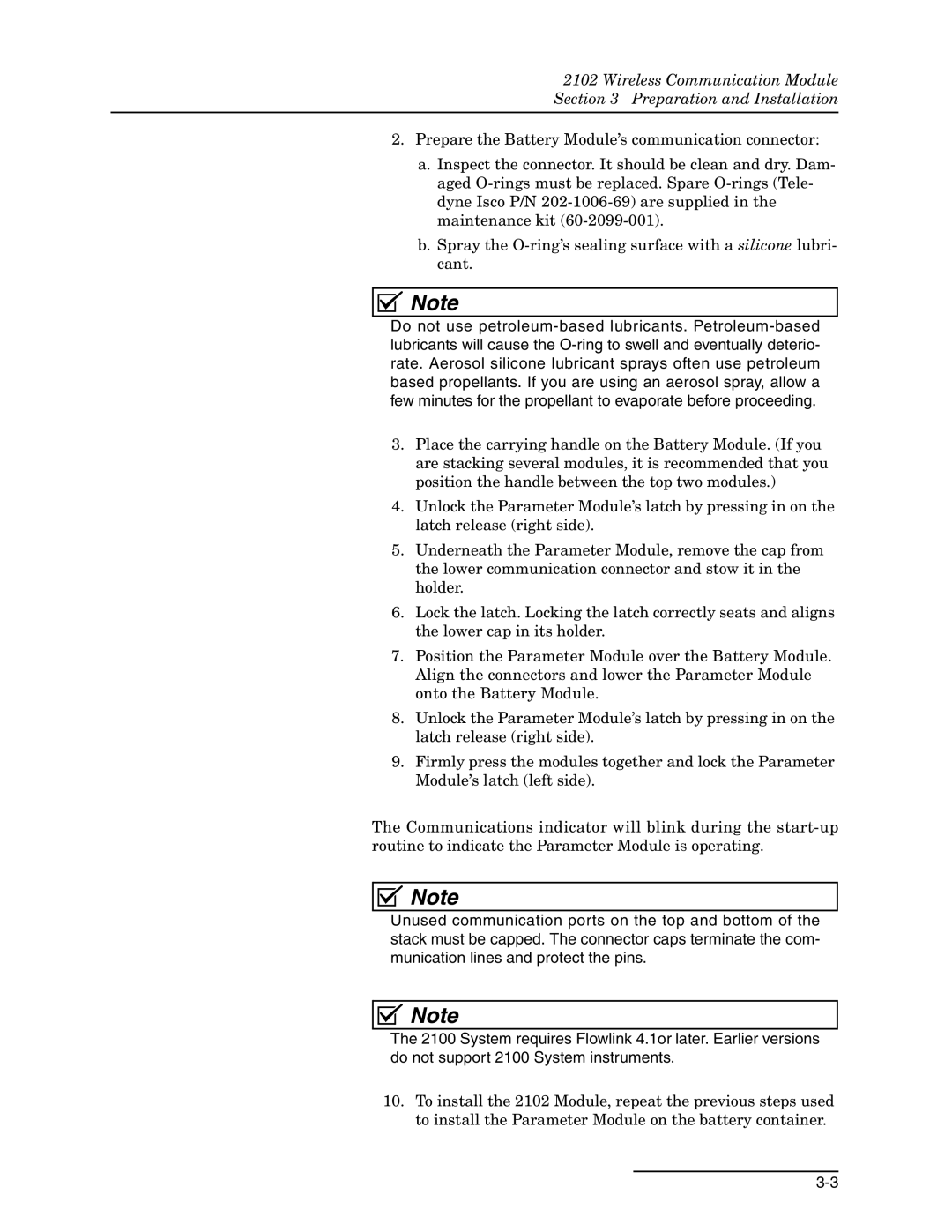
2102 Wireless Communication Module
Section 3 Preparation and Installation
2.Prepare the Battery Module’s communication connector:
a.Inspect the connector. It should be clean and dry. Dam- aged
b.Spray the
![]()
![]()
![]()
![]()
![]() Note
Note
Do not use
3.Place the carrying handle on the Battery Module. (If you are stacking several modules, it is recommended that you position the handle between the top two modules.)
4.Unlock the Parameter Module’s latch by pressing in on the latch release (right side).
5.Underneath the Parameter Module, remove the cap from the lower communication connector and stow it in the holder.
6.Lock the latch. Locking the latch correctly seats and aligns the lower cap in its holder.
7.Position the Parameter Module over the Battery Module. Align the connectors and lower the Parameter Module onto the Battery Module.
8.Unlock the Parameter Module’s latch by pressing in on the latch release (right side).
9.Firmly press the modules together and lock the Parameter Module’s latch (left side).
The Communications indicator will blink during the
![]()
![]()
![]()
![]()
![]() Note
Note
Unused communication ports on the top and bottom of the stack must be capped. The connector caps terminate the com- munication lines and protect the pins.
![]()
![]()
![]()
![]()
![]() Note
Note
The 2100 System requires Flowlink 4.1or later. Earlier versions do not support 2100 System instruments.
10.To install the 2102 Module, repeat the previous steps used to install the Parameter Module on the battery container.
